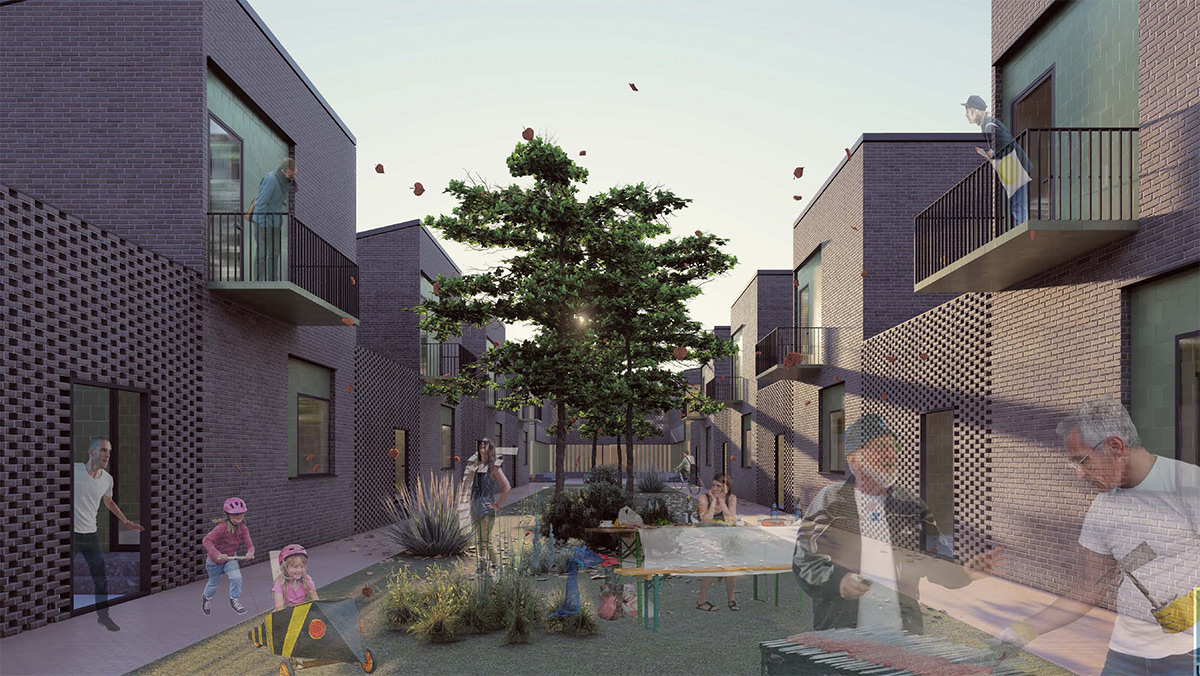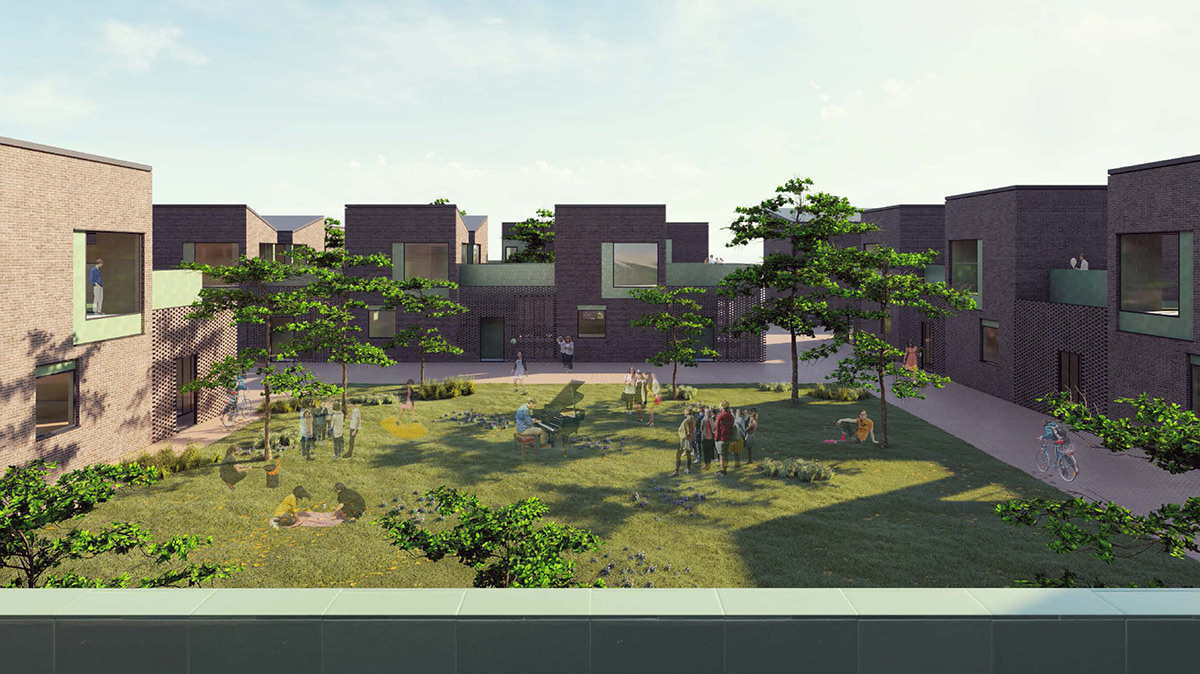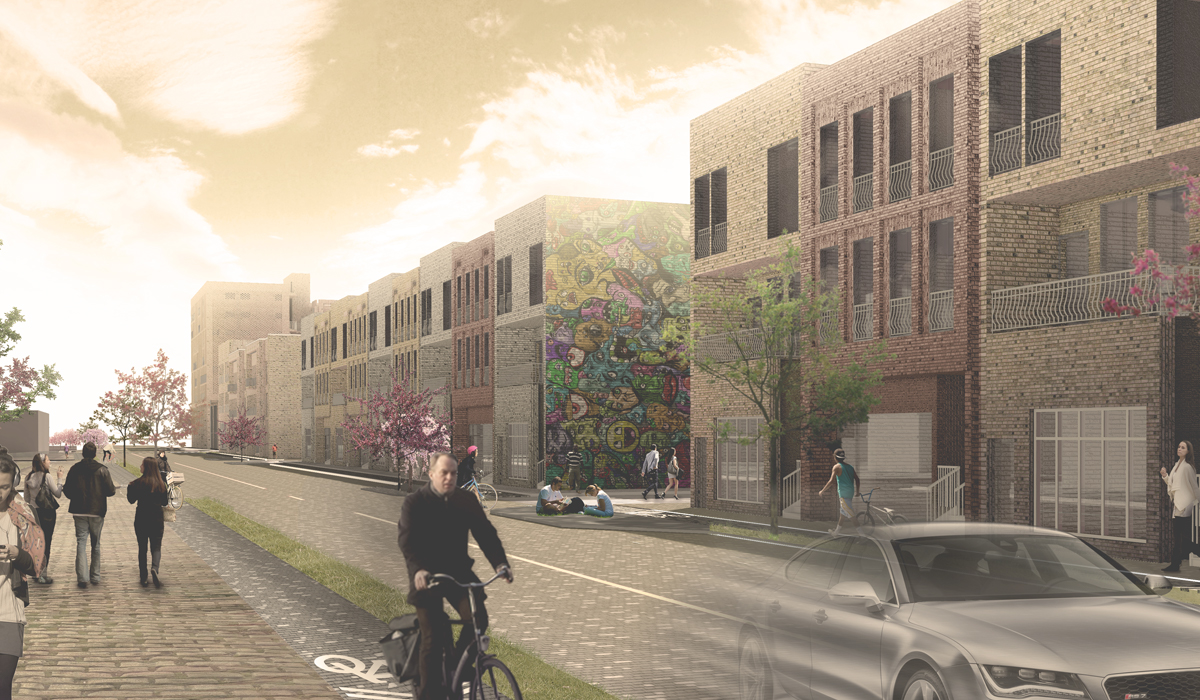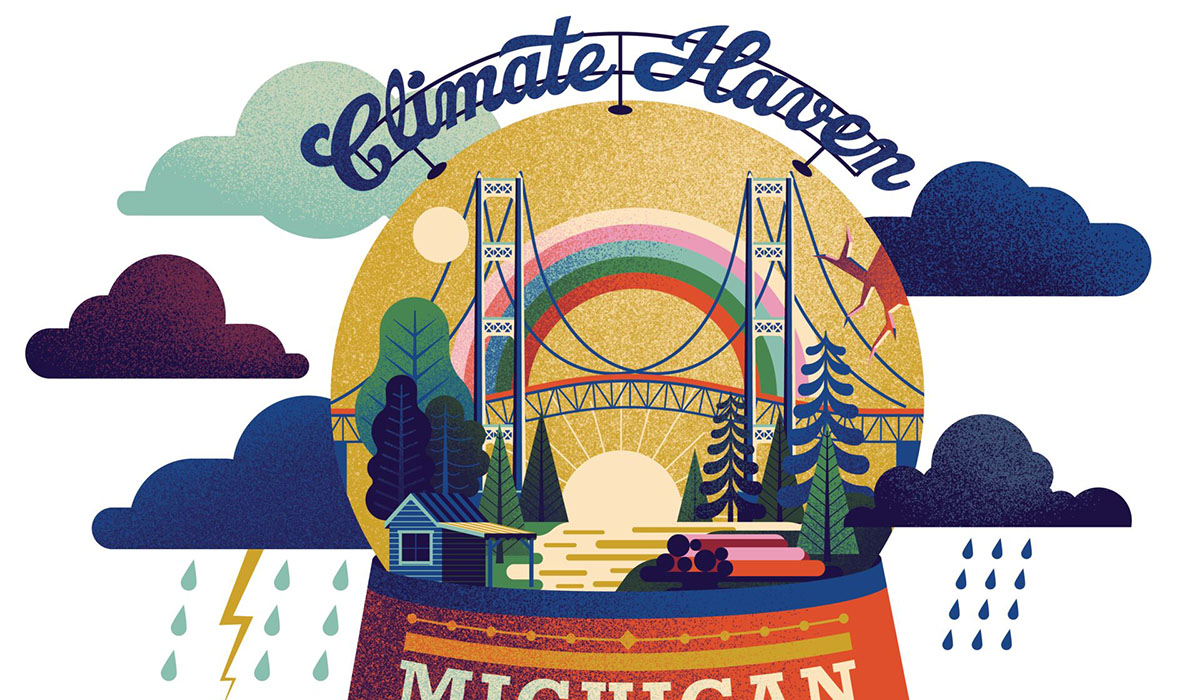Mere days after the coronavirus caused governments to impose stay-at-home orders, once-vibrant downtowns became desolate. As those orders have been lifted and many businesses have reopened, albeit with new social-distancing and public-safety protocols, cities face their greatest challenges — and opportunities — in recent decades.
Municipalities, business districts, and neighborhood groups are turning to architectural and urban designers, such as Kit Krankel McCullough, for help in reinvigorating urban spaces. A lecturer in the Taubman College of Architecture and Urban Planning, McCullough has designed and directed revitalization projects for cities as diverse as Washington, D.C., and La Grange, Georgia.
“In many ways, the coronavirus shutdown accelerated changes that were already under way in American cities,” says McCullough, who has a private consulting practice and teaches urban design, neighborhood development, transportation, and urban economics at Taubman.
During the spring peak of the virus crisis in April, for example, telecommuting and distance learning skyrocketed while traditional commuting plummeted. Many cities closed off streets to vehicles, allowing more space for residents to walk and bike. Home delivery of food and other items burgeoned. Downtown parking spots were redeployed as pickup and delivery zones.
The pandemic also brought unexpected benefits, such as a reduction in traffic deaths, rush-hour backups, and air pollution. Cities saw their cleanest air in decades. Yet McCullough and other urbanists are concerned about the long-term viability of American cities. She wonders whether hard-hit urban areas will experience a coronavirus-driven exodus reminiscent of white flight in the 1960s.
“Before the pandemic, downtowns were ascendant and growing, because people wanted to live, work, and play in densely populated urban spaces with lots of activities,” McCullough says. “If people no longer feel safe coming downtown and mingling with large crowds, I’m worried our cities will suffer.”
What American cities need now more than ever, she says, is a survival kit to repair the damage wrought by the pandemic and to speed the recovery process.
Creating 20-Minute Neighborhoods
The trend toward telecommuting has led to a renewed focus on neighborhood surroundings and local amenities. To attract and retain urban dwellers who want the convenience of living close to shops and services, cities are creating “20-minute neighborhoods.”
The concept, first popularized in Portland, Oregon, involves embedding small businesses in residential enclaves. These “urban villages” are designed so residents can walk or bike to restaurants, coffee shops, and stores within 20 minutes.
“The value of walkable, mixed-use neighborhoods became evident during the coronavirus lockdown, when people suddenly needed the ability to access goods and services locally,” McCullough says.
To encourage the evolution of 20-minute neighborhoods, cities may have to modify their zoning ordinances to allow mixed-use development with sufficient housing density to support retail shopping. Other proactive measures include offering economic incentives for small businesses, installing new pedestrian and cycling infrastructure, and ensuring any new development is architecturally compatible with the surrounding area.
Real estate developer Alex DeCamp, ’04, MUP’12, and his partner, Reimer Priester, are co-owners of Villages Property Management. In the Villages of Detroit, they have completed three mixed-use redevelopment projects along the revitalized Kercheval Avenue and restored numerous duplexes and single-family homes as well as two apartment buildings.
“We believe in walkability and embrace the concept of the 20-minute neighborhood,” DeCamp says. Investments in residential and retail development in the Villages, he says, have improved the amenities for residents, increased property values, attracted additional in-fill development, and bolstered tax revenues needed for enhancing infrastructure, parks, and public safety.
“Previously, the Kercheval corridor lacked any development and had a lot of crime,” says DeCamp. “Now it’s a pleasant destination where parents can feel safe walking with their kids.”
Fostering Missing Middle Housing

Recent trends in urban-housing design also have accelerated in the wake of the pandemic.
“The popularity of single-family homes has been softening for decades,” McCullough says. “And post-COVID, I don’t see a great demand for high-rise residential towers anymore.” Many residents who were cooped up in shoebox-size apartments or condos due to stay-at-home orders are reevaluating their living situation and looking for alternatives, just in case similar orders are issued in the future.
In recent years, McCullough has seen a significant rise in market demand for “missing middle housing,” which falls midway between single-family homes and multifamily high-rises.
“If people are working from home, they want to live in a small apartment building, duplex, or townhouse with more square footage, a private entrance, a balcony or terrace, and outdoor green space,” McCullough says. These types of missing middle housing, she adds, can be inserted into single-family neighborhoods to add enough density to sustain small, local businesses while retaining the neighborhood’s original character. Urbanists call this “gentle densification.”
Missing middle housing faces headwinds, however. Typically, real estate developers prefer to build large-scale housing projects that attract public-private investment and yield hefty returns. In addition, many cities’ zoning laws prohibit the construction of apartment buildings in single-family neighborhoods.
But that is beginning to change.
“Last year, Minneapolis revised its zoning ordinances to allow developers to build up to three residential units on any parcel of land zoned for single-family homes,” McCullough says. “Other cities are looking to do a similar thing to meet the increasing demand for this scale of housing.”
At Minneapolis-based Incremental Development Alliance, executive director Jim Kumon, ’05, and his staff are providing training and technical assistance to help developers, cities, and nonprofit groups ramp up small-scale real estate developments nationwide.
“Missing middle housing is the fabric of our legacy cities and one of the building blocks of our neighborhoods,” Kumon says.
Over the last 60 years, the relentless development of massive multifamily complexes and sprawling single-family subdivisions has left the U.S. with a mismatch between the small-scale residences people need, want, and can afford and the existing housing stock. This disconnect, according to Kumon, has been exacerbated by demographic shifts, such as the shrinking size of American households.
“People now want to live in places with walkable neighborhoods and small-scale housing,” Kumon says. “We’re trying to help individuals and cities rediscover the lost art of developing these places.”
Leveling the Playing Field
Small retail stores and family-owned restaurants were shuttered for weeks during the pandemic, with many suffering catastrophic losses.
“The shutdown illustrated what is essential to the functioning of our society ― the layers we ignored or that were somewhat hidden, such as transit, deliveries, groceries, supply chains, schools, and the public health care system,” McCullough says. “I’m concerned many local retailers and restaurants won’t survive. Do we really want a world where all of our needs, including groceries, are only obtainable on Amazon?”
To retain the unique local flavor of downtown shopping and dining districts, cities may need to level the playing field for family-run businesses that are competing with deep-pocketed chain stores. For instance, McCullough suggests capping the size of downtown retail space to make smaller-footprint stores available and affordable for small business owners.
Coronavirus-driven limits on the number of customers permitted in shops and sit-down restaurants could be eased by allowing local businesses to expand outdoors into parking lots, streets, and plazas. In addition, farmers markets selling local produce and handicrafts could be relocated to airy public parks to encourage safe distancing.
Redressing Social Inequities

Substantial evidence indicates that the coronavirus has disproportionately affected low-income minority residents in urban areas.
“We have known that the structural racism in our society is spatial ― literally in the structure of our cities ― but the pandemic has laid this bare,” McCullough says. “African Americans have been contracting and dying from COVID-19 at a far greater rate than whites.”
Spatial conditions ― such as limited access to health care, nutritious food, clean water, and reliable transportation ― have increased the vulnerability of disadvantaged communities. Many urban dwellers also suffer from asthma, diabetes, and obesity because they live in food deserts with higher levels of air pollution and industrial contaminants.
“In Detroit, there are people who can’t wash their hands because their water has been shut off,” McCullough says. “Some of my Taubman students were unable to continue their studies online because they lacked access to robust internet service in their neighborhoods.”
Conditions are likely to worsen without decisive action to mitigate long-standing social inequities, according to McCullough.
“I only hope the pandemic will finally provide the impetus we need to address these issues comprehensively.”
Looking to the Future

McCullough remains cautiously optimistic that American cities can survive the coronavirus pandemic, achieve greater resilience, and resume their growth.
“If you think about New York City in the 1980s or Detroit in the 2000s, when conditions were so dire, there were cool things happening in music venues and restaurants,” she says. “Rents were affordable, and people had more leeway for creative pursuits.”
With perseverance and luck, cities may once again experience a renaissance driven by hardscrabble innovators, entrepreneurs, and artists.
“In the aftermath of the coronavirus lockdown, people have come to appreciate the value of the public realm and the social interaction our cities provide,” McCullough says. “I think this realization will incentivize us to invest in our cities, neighborhoods, and social structure.”
Claudia Capos, ’73, is an award-winning journalist and the owner of Capos & Associates. Her feature articles on research, business, celebrities, and travel have appeared in national and regional publications.





